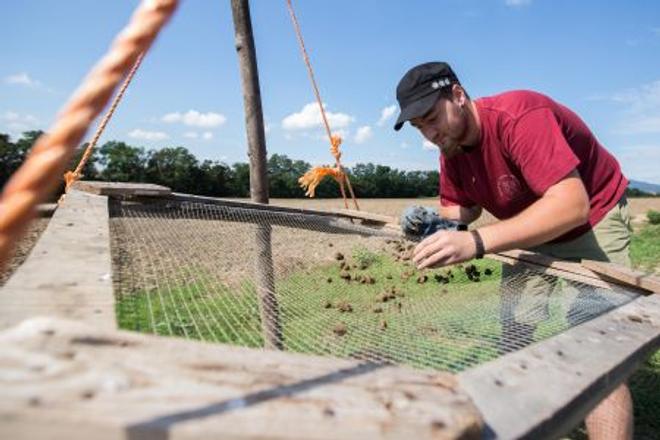THE SLOVAK Archaeological and Historical Institute (SAHI), which has been excavating one of the most important fortified settlements on Slovak territory for the last five years, has opened the fifth phase of its archaeological research (in cooperation with the Small-Carpathian Museum in Pezinok) and on August 15 its representatives presented the results to the media and the public.
The settlement was built by the people of the Maďarovce culture, named after the municipality of the same name in western Slovakia. At the end of the Early Bronze Age and the beginning of the Middle Bronze Age, i.e. the period from mid-18th century to the mid-15th century BC, this settlement was comprised of around 1,000 people, which was more than usual for the territory of today’s Slovakia at that time.
“The goal of our research is to study the locality as thoroughly as possible,” Pavol Jelínek of SAHI told the TASR newswire. “We will be able to use the results to make an as extensive as possible reconstruction of the country and everyday life; from the country, the economic background of the settlements, the architecture and urbanism and economic activities, we can get as far as the social structure and the phenomena of the spiritual life of its inhabitants, if the archaeological sources and methods used enable it.”
The findings show social and trade contacts with neighbouring central-European cultures, but also with more distant and then more developed civilisations of the Mediterranean region. Special findings include artefacts that offer insight into the spiritual life of the inhabitants of the fortified settlement. Some of the findings are about 4,000 years old.
“During the research, we managed to detect peripheral walls of the dwellings, pits (probably used for storing food or seeds), bronze artefacts like earrings, hanging jewels, a ring, ritual items, arrow-heads and dagger tips, needles and work tools,” the archaeologist said. “And also interesting are the remains of metallurgic furnaces in which the copper and tin mined in the nearby Small Carpathians were processed into bronze ingots. It is a rarity that in addition to ceramic shards, whole vessels, cups and mugs have also been preserved in the earth.”
“The skeletal findings are interesting, too,” Jelínek said. “Alongside the bones of various wild animals – even a bear – bones of livestock, sheep, goats and other domestic animals were found. Even a very well preserved skeleton of a buried woman was found there. The findings of many carbonised wheat and barley grains prove that locals were already developed farmers, too.”
Some findings of human skeletons appear to have been cooked, indicating that these ancestors of ours were not averse to eating human flesh.
The research and its preliminary results contribute strongly to the knowledge of the development of cultures in the early and middle Bronze Age in central Europe.



 Archaeological site in Budmerice (source: SITA)
Archaeological site in Budmerice (source: SITA)